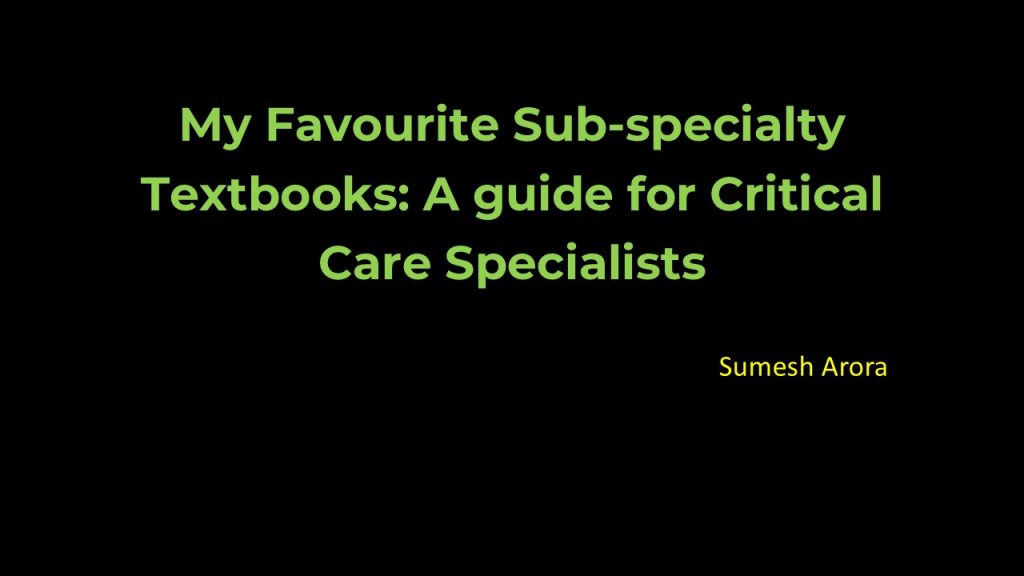Sub-specialty Textbooks in Critical care
After becoming specialists, we want to dig deeper into topics that interest us. Many topics are outside the scope of standard textbooks. For such topics, specialty textbooks in critical care are invaluable. They save us the time we may spend searching for a topic online. Some of my favourites are listed below. After finishing my training, I bought and learned a lot from most of these books. Some of these are on my reading list, and I can’t wait to get my hands on them.
Cardiac Intensive Care
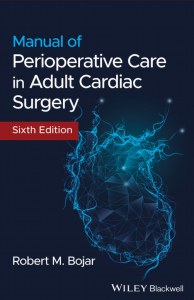
- Manual of Perioperative Care in Adult Cardiac Surgery by Robert M Bojar: Cardiothoracic intensive care is short-changed in most textbooks of intensive care. When one starts working in cardiothoracic intensive care units, it becomes evident that it is a sub-speciality, and in-depth knowledge is required. I find this book an excellent companion in my cardiothoracic intensive care practice. I also like ‘Cardiothoracic Critical Care’ by David Sidebotham et al. Its last Edition was published in 2007, and much has changed since in cardiothoracic critical care. For some topics, I realized even greater details are necessary. My other preferred sources for cardiothoracic intensive care include:
- ECMO in the Adult Patient by Vuylsteke, Brodie, Combes, Fowles, and Peek (Cambridge Medicine): I had enormous difficulty learning ECMO until I found this book. It is one of my favourite books on intensive care, and this is about as high a recommendation as I can give.
- The Cardiohelp System (Maquet, Getinge Healthcare, Sweden)
- There are several other online and print resources for ECMO.
- Temporary (epicardial or transvenous) pacing: The manual of Medtronic 5392 temporary external pacemaker
- Practical Cardiovascular Haemodynamics with Self-assessment Problems by Hanna and Clancy (Demos Medical) is an excellent book for interpreting waveforms, such as those from CVP to pulmonary artery catheters. Such questions are vitally important clinically and in exams like EDIC II.
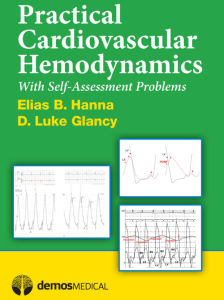
iii. Practical Cardiovascular Haemodynamics with Self-assessment Problems by Hanna and Clancy (Demos Medical) is well illustrated, detailed and easy-to-read. - Cardiothoracic Advanced Life Support: The Australasian ANZSCTS/ANZICS guidelines on cardiothoracic advanced life support (CALS-ANZ). Pubmed Link.
- Intra-aortic Balloon Pump: The manual of the machine you use in your ICU would be a good starting point. An excellent open-access review published by the journal of the Society for Cardiovascular Angiography & Interventions is available here.
- ECMO in the Adult Patient by Vuylsteke, Brodie, Combes, Fowles, and Peek (Cambridge Medicine): I had enormous difficulty learning ECMO until I found this book. It is one of my favourite books on intensive care, and this is about as high a recommendation as I can give.
Renal Intensive Care
- Critical Care Nephrology by Ronco, Kellum and Bellomo: A comprehensive textbook that covers every aspect of critical care nephrology, including Acute kidney injury, CRRT, fluids, electrolytes, acid-base balance, etc. In addition, the https://kdigo.org/guidelines/ are an excellent, open-access resource.
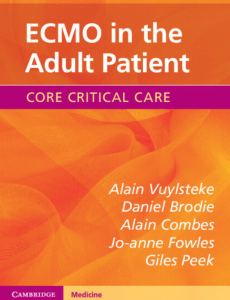
ECMO in the Adult Patient by Vuylsteke, Brodie, Combes, Fowles, and Peek (Cambridge Medicine) is an easy-to-read and well-illustrated book. I had enormous difficulty learning ECMO, but only after reading this book did I begin to comprehend it.
Infectious Diseases
- Infectious Diseases by Cohen, Powderley and Opal (Elsevier) is also an excellent reference book for intensivists. While there are many books on infectious diseases, I bought one because of the quality of illustrations and an easy to read style of the text. I have only read a handful of topics from this book. I was particularly impressed by the chapters on innate and adaptive immunity. During my training years, I was lucky to have institutional access to this book, and it was great to read antibiotics from it. The focus of this book is not critically ill. For intensive care specialists, this book is valuable if one has a particular interest in infectious diseases.
- Surviving Sepsis Guidelines 2021 are available as an open-access article in the journal Critical Care Medicine here.
Neuro-Intensive Care
- The Practice of Emergency and Critical Care Neurology by Eelco FM Wijdicks (Oxford University Press): It is a brand new book, just released (Copyright 2025). I downloaded a sample on Kindle and instantly liked it. It is written in a conversational style, so very easy to read. It is well illustrated. The flowcharts provide an easy-to-follow guide for clinical management in tough situations. The first few chapters cover evaluating and managing common neurological presentations (e.g., ‘Confused and febrile’, ‘A terrible headache’, ‘Moving, jerking and spasm’). I hope to read more of this book in the coming months. In addition to covering primary neurological problems, the book covers common neuro consults (e.g., neurological disorders after cardiac surgery, aortic surgery, CPR, etc.). Those working in neuro-intensive care units will find this book helpful. Other resources that I have often referred to include:

e. The Practice of Emergency and Critical Care Neurology by Eelco FM Wijdicks (Oxford University Press, Copyright 2025) - The guidelines by the Brain Trauma Foundation
- The guidelines for subarachnoid haemorrhage by the AHA and ASA.
- I subscribe to the table of contents of Neurocritical Care Journal (Springer). It publishes excellent review articles.
Respiratory Critical Care
- The Oxford Textbook of Respiratory Critical Care by Singh, Pelosi and Morris (Oxford University Press) is relatively new (First edition 2023).
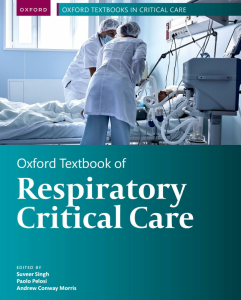
c. Oxford Textbook of Respiratory Critical Care by Singh, Pelosi and Morris (Oxford University Press) I have only read a handful of topics from this book, and it is an excellent read. Topics like pulmonary hypertension, pulmonary haemorrhage, pleural diseases, etc., which are often not discussed in detail in standard textbooks, are covered in depth. In addition, a few other topics related to airway and respiratory management deserve an in-depth reading. Some of these are:
- Anyone Can Intubate by Christine E Whitten (Mooncat Publications): It is an excellent book for beginners in anaesthesia and intensive care. I read this book after I became a consultant and found it highly educational (and delightful). It covers the essentials of airway management (Direct laryngoscopy, orotracheal intubation, verifying placement, etc. The book also covers several case scenarios in the final chapter – Boredom, Interrupted). It is a delightful book and a surprisingly easy read. I recommend it to the early-year trainees and anaesthesia and intensive care educators.
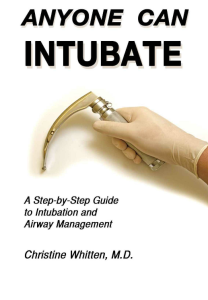
Anyone Can Intubate
A Step-by-Step Guide To Intubation and Airway Management by Christten E Whitten MD (Mooncat Publications) - Pilbeam’s Mechanical Ventilation and Workbook for Pilbeam’s Mechanical Ventilation Elsevier eBook on VitalSource. I have not read this book; I only browsed it and liked what I saw. This book comes with a workbook. Practising mechanical ventilation problems is an excellent way to learn. In addition, I would recommend:
- Ventilator Graphics: Identifying patient-ventilator asynchrony and optimizing settings (Kindle Edition): A relatively inexpensive yet valuable resource for learning ventilator graphics.
- The manual of the ventilator you use in your ICU will have pictures of the ventilator and graphics of the machine you use.
- Martin J. Tobin’s Principles and Practice of Mechanical Ventilation (McGraw Hill) is a detailed and appropriate reference for specialists.
- Trainees should find a good resource for ventilator waveforms. Ventilators are our core business. Not knowing how to set a ventilator and interpret waveforms is not an option. Their importance extends beyond any exam.
- A good book on the interpretation of arterial blood gas analysis. If you know a good one, please recommend me.
- Anyone Can Intubate by Christine E Whitten (Mooncat Publications): It is an excellent book for beginners in anaesthesia and intensive care. I read this book after I became a consultant and found it highly educational (and delightful). It covers the essentials of airway management (Direct laryngoscopy, orotracheal intubation, verifying placement, etc. The book also covers several case scenarios in the final chapter – Boredom, Interrupted). It is a delightful book and a surprisingly easy read. I recommend it to the early-year trainees and anaesthesia and intensive care educators.
I would like to know about other great resources, in print or online, that are also available.
Sumesh Arora
FCICM, EDIC, MD
Sydney
(I have no conflict of interest in any of the above recommendations. I have learnt a lot from these books and other resources)
